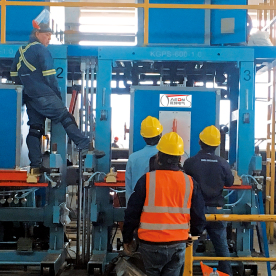[Variable Impedor Device]Exploring the Innovative Applications and Functionalities of Variable Impedor Devices in Modern Electronic Systems

Exploring the Innovative Applications and Functionalities of Variable Impedor Devices in Modern Electronic Systems
The evolution of electronic systems has propelled numerous innovations aimed at enhancing performance, efficiency, and adaptability. Among these advancements, the Variable Impedor Device (VID) stands out as a pivotal technology. This article delves into the functionalities, applications, and future prospects of VID, highlighting its significance in various fields, including telecommunications, audio engineering, and power management systems.
A Variable Impedor Device, as the name suggests, is engineered to adjust its impedance characteristics dynamically. These devices can modulate their resistance, reactance, and overall impedance in response to varying input signals or external conditions. The core functionality of VIDs stems from their ability to optimize the performance of electronic circuits, enabling more efficient signal processing and energy management.
One of the most notable applications of Variable Impedor Devices is in the realm of telecommunications. In this sector, the efficiency and quality of signal transmission are paramount to ensuring effective communication. Traditional fixed-impedance circuits can lead to signal attenuation and reflection, reducing the overall clarity and strength of the transmitted signal. By integrating a Variable Impedor Device, engineers can match the impedance levels to varying signal frequencies, thus enhancing signal integrity and minimizing loss. This capability not only improves the range and reliability of telecommunications systems but also allows for the development of more compact and versatile equipment.
In audio engineering, Variable Impedor Devices play a critical role in shaping sound quality and control. High-end audio equipment often utilizes variable impedance matching to compensate for discrepancies between different audio components, ensuring that the sound produced is clear and balanced. For instance, in amplifiers and equalizers, VIDs can adjust their impedance based on the connected devices’ specifications, optimizing sound reproduction. This technology allows for a more tailored audio experience, appealing to sound professionals and enthusiasts alike. Moreover, advancements in VID technology have led to the creation of automated systems that can adjust impedance settings in real-time based on user preferences or environmental factors, paving the way for a new era of smart audio solutions.
Power management systems also greatly benefit from the integration of Variable Impedor Devices. In power electronics, VIDs are utilized to enhance the efficiency of converters, inverters, and rectifiers. By optimizing the impedance levels in these circuits, VIDs help reduce energy losses, thereby improving the overall efficiency of power supply systems. This is particularly relevant in renewable energy applications, where maximizing the conversion of solar or wind energy into usable electrical energy is crucial. By implementing VIDs, engineers can configure systems to adapt to varying load demands seamlessly, making energy distribution more efficient and reliable.

Exploring the Innovative Applications and Functionalities of Variable Impedor Devices in Modern Electronic Systems
Despite the many advantages of Variable Impedor Devices, some challenges remain in their widespread adoption. The complexity of design and potential cost implications can deter some manufacturers from implementing VIDs in their products. Moreover, the sophistication of these devices requires a keen understanding of electronic principles, making them more suited for specialized applications rather than mass-market consumer electronics. However, as technology continues to advance and the demand for energy-efficient, high-performance electronic systems grows, the advantages of VIDs may outweigh these challenges.
Looking to the future, the prospects for Variable Impedor Devices are promising. As industries increasingly prioritize sustainability and efficiency, the demand for technologies that can dynamically adapt to various operational conditions will likely expand. Ongoing research aimed at miniaturizing these devices and enhancing their performance will drive innovation in fields such as wearable technology, smart grids, and IoT applications.

Exploring the Innovative Applications and Functionalities of Variable Impedor Devices in Modern Electronic Systems
In conclusion, Variable Impedor Devices are at the forefront of revolutionizing how we approach electronic systems. With their unparalleled ability to dynamically adjust impedance levels, VIDs hold transformative potential across various sectors. From improving telecommunications and audio engineering to enhancing power management systems, these devices embody the spirit of modern technological innovation. As the world moves toward more sustainable and efficient solutions, the significance of Variable Impedor Devices will undoubtedly continue to grow, shaping the future of electronics for decades to come.Energy-saving and Environmental-friendly All-in-one Welder
